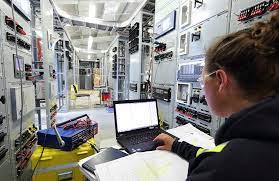Relay commissioning is a critical phase in ensuring the reliable and safe operation of electrical systems. The process involves verifying the correct installation, configuration, and functionality of protection relays, which are essential for safeguarding equipment and maintaining the stability of the electrical grid. To shed light on the importance and effectiveness of relay commissioning, we will delve into real-world case studies of successful commissioning projects.
Case Study 1: Power Substation Relay Commissioning
Project Overview: A utility company was upgrading its power substation to accommodate increased demand. This project involved the installation of new protection relays to enhance the substation's overall performance and reliability.
Challenges: The challenges included ensuring seamless integration of the new relays with existing equipment, verifying relay coordination, and testing the response of the relays under various fault scenarios.
Commissioning Process:
Functional Testing: The commissioning team initiated functional testing by verifying the correct wiring and connections of the relays. They also conducted trip and alarm checks to ensure that the relays operated as expected.
CT and VT Testing: Current transformers (CTs) and voltage transformers (VTs) were tested for accuracy. The team injected known currents and voltages to validate the relays' responses.
Coordination Testing: Coordination testing was performed to verify that the time-delay settings between relays at different protection levels were correctly configured.
Fault Simulation: The commissioning team simulated various fault scenarios, such as short circuits and phase imbalances, to evaluate the relays' response.
Settings Verification: Relay settings were reviewed and adjusted to align with the protection requirements of the substation.
Results: The commissioning process ensured that the protection relays were correctly installed and configured. Coordination between relays was confirmed, and the relays demonstrated accurate and timely responses to faults. The upgraded substation now operates with improved reliability and safety.
Case Study 2: Wind Farm Relay Commissioning
Project Overview: A wind farm operator was expanding its facility with additional turbines. To protect the turbines and integrate them into the grid, a comprehensive relay commissioning project was initiated.
Challenges: Challenges included adapting relay settings to account for variable wind conditions, implementing islanding protection for grid outages, and ensuring seamless communication between relays.
Commissioning Process:
Functional Testing: The commissioning team verified the correct wiring and initiated functional testing. They conducted trip and alarm checks for various protective functions, considering the variable generation profiles of wind turbines.
Islanding Protection: Islanding protection schemes were implemented to detect grid disturbances and disconnect the wind turbines from the grid when necessary. The team extensively tested these schemes to prevent unintentional energization.
Communication Testing: Communication protocols were tested to ensure reliable data exchange between wind turbines and the grid operator's control center. Remote access capabilities were also verified.
Fault Simulation: Simulated fault conditions, such as grid faults and turbine faults, were introduced to assess the relays' response and their coordination with other protective devices.
Settings Verification: Relay settings were carefully reviewed to adapt to the variable generation profiles of wind turbines while maintaining grid stability.
Results: The commissioning process successfully adapted relay settings to accommodate variable wind conditions. Islanding protection schemes were reliable, ensuring safe disconnection from the grid during disturbances. Communication between turbines and the control center was established, allowing for remote monitoring and control. The wind farm expansion now operates with enhanced protection and grid integration capabilities.
Case Study 3: Industrial Plant Relay Commissioning
Project Overview: An industrial plant with critical manufacturing processes required an upgrade to its protection relay system to enhance equipment reliability and minimize downtime
Challenges: Challenges included coordinating relay settings to protect sensitive manufacturing equipment, ensuring reliable fault detection, and integrating the new relay system with existing infrastructure.
Commissioning Process:
Functional Testing: Functional testing involved verifying the proper installation of the new relay system. The commissioning team conducted tests to confirm that relays operated as intended during fault conditions.
Settings Coordination: Relay settings were meticulously coordinated to provide optimal protection for critical manufacturing processes while minimizing nuisance trips.
Harmonics and Power Quality Testing: Given the sensitive nature of manufacturing equipment, the team conducted harmonics and power quality testing to ensure that the relay system addressed any power quality issues effectively.
Redundancy Testing: Redundancy configurations were tested to verify fail-safe operation in case of relay or equipment failures.
Documentation and Training: Comprehensive documentation of relay settings and test results was provided to plant operators. Training sessions were conducted to ensure that plant personnel could effectively operate and troubleshoot the relay system.
Results: The upgraded relay system improved equipment reliability and reduced downtime in the industrial plant. The coordinated relay settings protected critical manufacturing processes, and the relay system effectively addressed power quality issues. Redundancy configurations ensured uninterrupted operation, and plant personnel were well-prepared to manage the relay system.
Conclusion:
These case studies highlight the significance of relay commissioning in various settings, including substations, wind farms, and industrial plants. Successful commissioning projects result in enhanced reliability, improved safety, and efficient protection of critical equipment. Through thorough testing, coordination of relay settings, fault simulation, and proper documentation, relay commissioning ensures that protection relays perform optimally in real


No comments yet